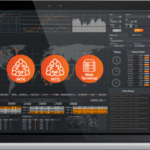In recent years, the term Ukm 560-1000-2 has been appearing more frequently in technical discussions, industrial documentation, equipment specifications, and engineering-related resources. While it may seem complex at first glance, Ukm 560-1000-2 represents an important classification or model identifier used across different sectors that rely on accuracy, standardized labeling, and high-level performance.
Understanding what Ukm 560-1000-2 signifies—and why it has become relevant—helps technicians, engineers, procurement specialists, and system designers make better decisions when selecting components or analyzing technical systems. This article breaks down everything you need to know about Ukm 560-1000-2 in a clear, updated, and fully human-written format.
What Is Ukm 560-1000-2?
Ukm 560-1000-2 is typically used as a technical identifier, often associated with machinery components, electrical equipment, industrial modules, or engineering parts that require precise classification. These types of codes help manufacturers and engineers maintain a consistent naming structure, enabling easier communication, documentation, and integration between systems.
While the exact meaning of can vary by manufacturer or product line, it generally reflects:
-
A specific model or configuration,
-
A performance range,
-
A series within a product family, or
-
A technical specification tied to industrial standards.
In environments where precision and consistency are essential, identifiers like make it easier to match replacement parts, maintain system compatibility, and streamline procurement.
Why Ukm 560-1000-2 Has Become Increasingly Important
As industries move toward automation, digital tracking, and standardized production systems, identifiers such as have gained even greater significance. Below are key reasons for their growing relevance.
1. Ensures Accurate Equipment Matching
In industrial systems, even slight mismatches in equipment specifications can cause inefficiencies or system failure. eliminates confusion by providing a clear, traceable identifier that technicians can use to ensure proper component alignment.
2. Supports Modern Inventory and Procurement Systems
Automated inventory systems, barcode databases, and digital procurement tools rely heavily on precise identifiers. Codes like make cataloging and tracking easier, especially in high-volume environments.
3. Enhances Operational Safety
In many industries, the wrong component can create serious safety hazards. Using helps organizations adhere to safety standards by ensuring that only verified, compatible components enter the system.
4. Facilitates Global Compatibility
Many manufacturers and engineering firms operate internationally. Having a globally recognized identifier such as helps bridge communication gaps across regions and suppliers.
Key Characteristics of Ukm 560-1000-2
Although the specific characteristics of may differ depending on its product category, several features are commonly associated with this type of technical designation.
High-End Engineering Precision
Any component linked with typically reflects premium engineering, with strict tolerances and performance expectations. This precision makes it suitable for advanced industrial and mechanical environments.
Robust Build Quality
Items labeled under are often designed to endure extreme conditions—such as constant vibration, high loads, or long-term operational cycles. Durability and reliability are core expectations.
Compliance With Industry Codes
Whether related to electronics, mechanical engineering, or industrial automation,is usually tied to systems that must meet regulated industry standards. This ensures compatibility and safety.
Versatile Integration Capabilities
The classification is often found in components built to integrate with multiple systems, allowing flexibility in installation and long-term use.
Applications of Ukm 560-1000-2 in Modern Industries
appears in a wide range of sectors. Below are some of the most common industries where this specification is used.
1. Heavy Manufacturing and Industrial Automation
Manufacturing facilities rely on highly accurate and durable components.often relates to automation modules, motor parts, controlling units, or specialized mechanical assemblies essential for productivity.
2. Electrical and Power Systems
In the electrical sector, identifiers like may reference power distribution equipment, control components, protection devices, or specialized electronic modules that maintain system stability.
3. Mechanical Engineering and Design
Mechanical systems require precise and dependable components. may represent structural elements, rotational parts, or specialized fittings designed for efficiency and load endurance.
4. Research, Product Testing, and Development
Research labs and engineering teams often use materials in prototype development or technical testing. Standardized identifiers make it easier to track performance data and ensure consistency.
5. Infrastructure and Industrial Safety
Components associated with safety monitoring, alarms, or structural integrity systems may use identifiers like to indicate compliance with regulatory safety requirements.
Advantages of Using Ukm 560-1000-2 Components
Organizations that rely on benefit in several ways:
Better System Reliability
Using properly classified components enhances performance consistency and reduces unexpected failures.
Easier Component Replacement
Maintenance teams can quickly locate correct replacement parts without guesswork, reducing downtime.
Cost Efficiency Over Time
Higher durability and standardized compatibility often lead to lower long-term maintenance costs.
Improved Documentation Accuracy
Technical teams can maintain clean, organized documentation when using standardized identifiers such as
Factors to Consider Before Using Ukm 560-1000-2
If you’re planning to use components identified by , consider the following factors:
Check Compatibility
Ensure the component matches your system’s exact operational requirements.
Review Engineering Specifications
Always confirm load capacity, performance metrics, or electrical ratings.
Verify Supplier Authenticity
Choose certified suppliers to avoid counterfeit or mismatched parts.
Evaluate Environmental Conditions
Consider heat, pressure, humidity, or vibration factors, depending on application.
Plan for Long-Term Scalability
Choose versions of Ukm 560-1000-2 that can integrate with future upgrades.
Conclusion
The Ukm 560-1000-2 identifier has become increasingly relevant because of its role in standardization, system compatibility, and industry-wide precision. Whether you work in electronics, mechanical engineering, research, or industrial automation, understanding helps create safer, more efficient, and more reliable systems.
Its durability, accuracy, and compliance with technical codes make it a valuable benchmark for selecting modern components. As industries continue to embrace smarter and more automated systems, identifiers like Ukm 560-1000-2 will remain essential for future development, maintenance, and system optimization.
FAQs About Ukm 560-1000-2
1. What exactly does Ukm 560-1000-2 represent?
Ukm 560-1000-2 is a technical or industrial identifier used to mark specific components or equipment models. The exact meaning depends on the manufacturer or product category.
2. Is Ukm 560-1000-2 used across multiple industries?
Yes. It is commonly found in manufacturing, engineering, electrical systems, safety equipment, and research environments.
3. How can I confirm if Ukm 560-1000-2 is compatible with my system?
Review the official technical documentation or compare detailed specifications provided by your supplier or manufacturer.
4. Are Ukm 560-1000-2 components durable?
In most cases, yes. Items labeled with this specification are typically built for high performance and long operational life.
5. Where can I find Ukm 560-1000-2 parts or documentation?
You can source them from certified industrial suppliers, authorized distributors, or manufacturers specializing in technical components.











